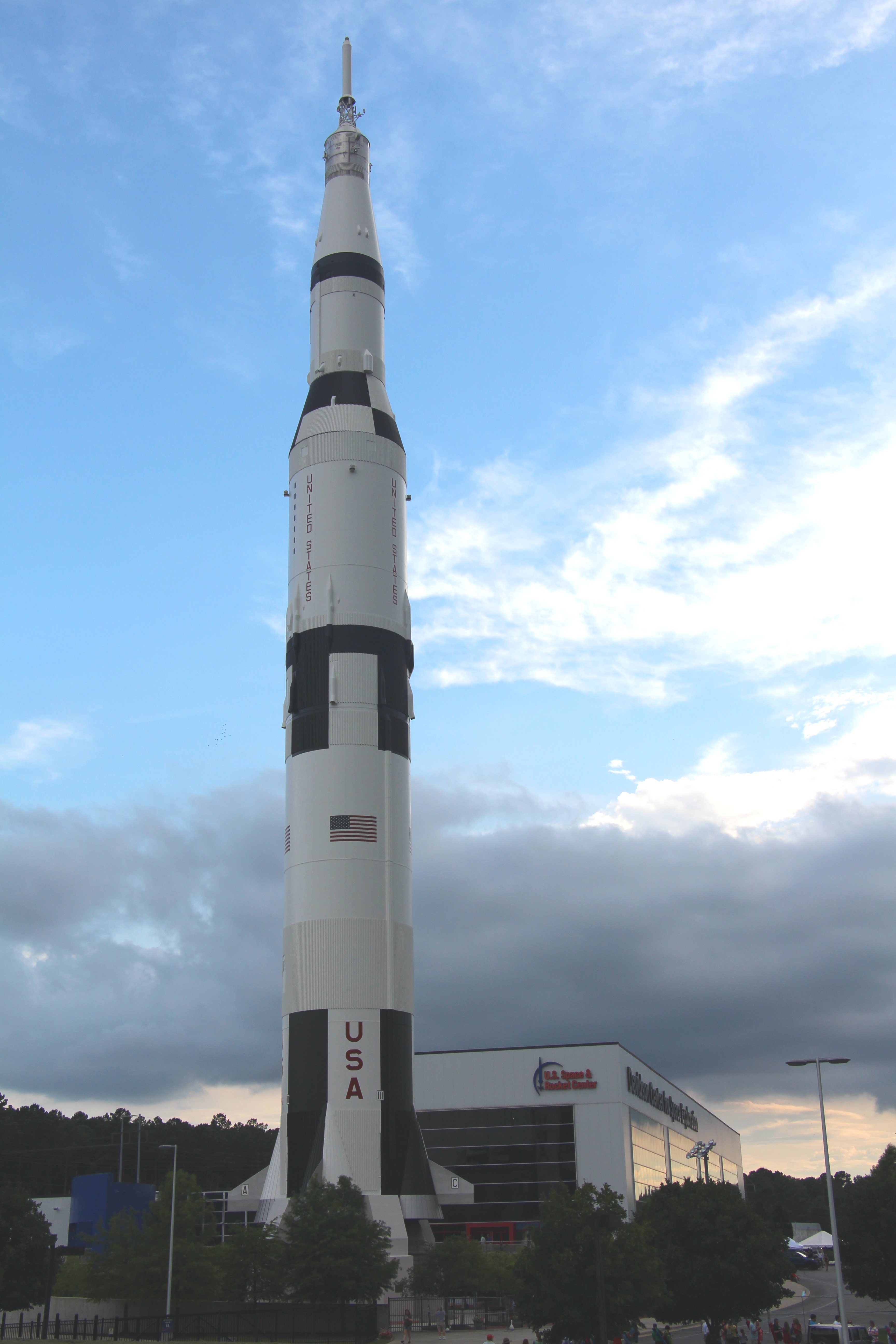Return to the Computer Museum of America
As mentioned in a previous article, I visited the Computer Museum of America ( www.computermuseumofamerica.org ) as a guest of S&T GeoTronics ( www.stgeotronics.com ), which had recently donated an Open DSKY replica to the Museum. This past Saturday, I returned to the Museum, this time bearing gifts. The Museum’s founder, Lonnie Mimms, had seen the “Open DSKY Command Reference” that I had written to accompany the upgraded software for the Open DSKY, and wanted one to display with the Museum’s Open DSKY. I managed to locate a couple of sheets of heavy cardstock in the correct salmon color of the original Apollo 11 Flight Plan, and printed several different versions of the cover so that they would have a choice of which one to display.

(Photo: Karin Mimms / Computer Museum of America)
After I presented Lonnie with the manual, he took my kids and me on a tour of the Museum. The Museum’s exhibits are very interesting and informative. They have systems ranging from IBM punch-card systems to a Cray XT-4, a Norden analog computer bombsight to a Connection Machine CM-2.
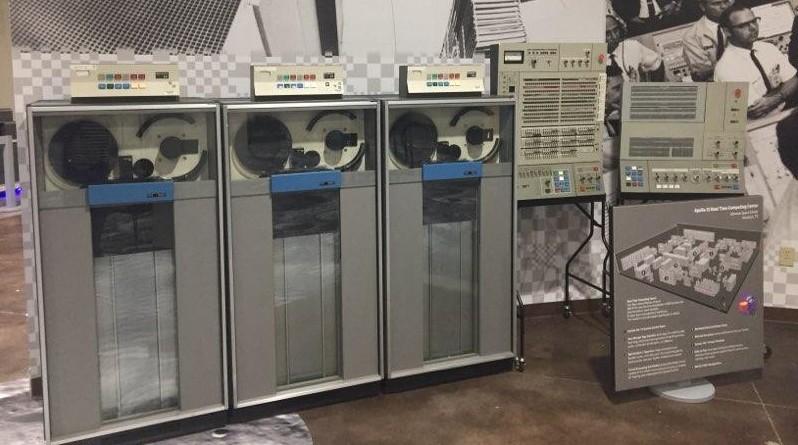
(Photo: Thomas Walker)
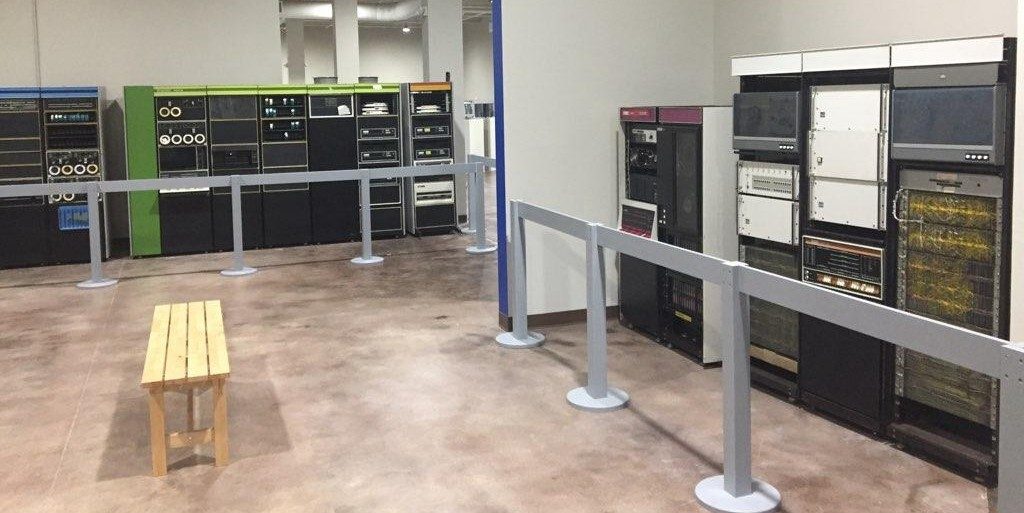
(Photo: Thomas Walker)
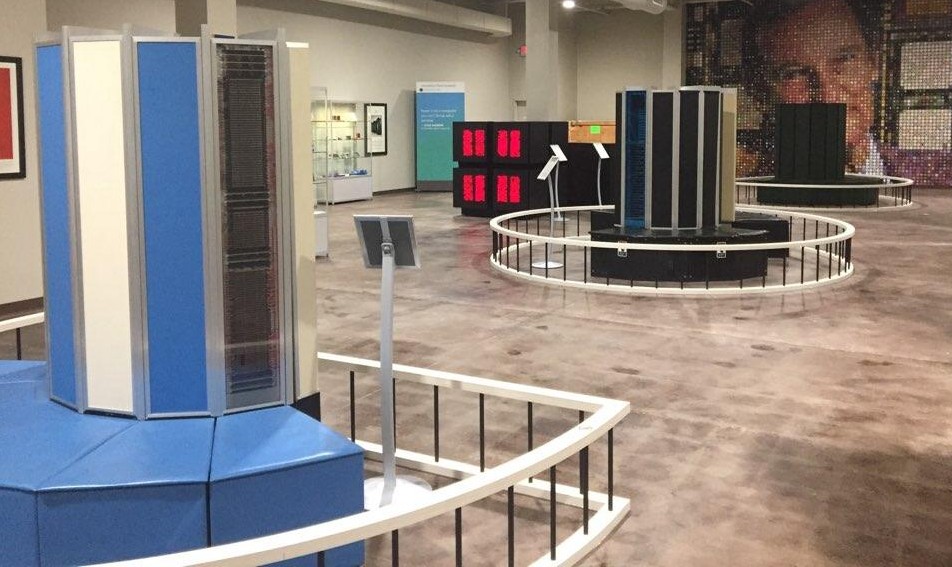
(Photo: Thomas Walker)
When you first enter and turn to the right, you’re presented with an amazing history of the microcomputer, starting with a Datapoint, a Kenbak, and a Xerox Alto. The Kenbak is considered the very first “personal computer”, while the Datapoint’s instruction set later became the foundation for a new single-chip “microprocessor”, the 8008, created by a company called Intel. The Alto was a document processor computer with a revolutionary graphic desktop, a design later “borrowed” by Apple for their Lisa and Macintosh computers.
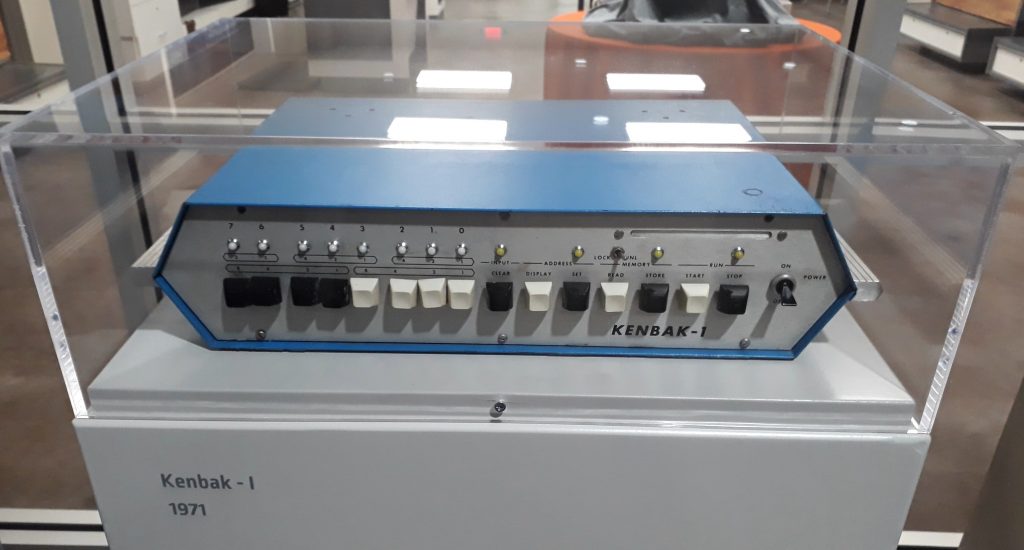
(Photo: The Apollo Education Experience Project)
Next is a computer few have heard of – a SCELBI-8H. This was the very first “microcomputer” in that it used the newly-released (at the time) Intel 8008 microprocessor. SCELBI enjoyed some modest success, particularly with their 8B “business” model. However, although it wasn’t so successful as to make the founders wealthy, it was successful enough to convince Intel to produce a more advanced version of the processor, the 8080.

(Photo: The Apollo Education Experience Project)
Forrest M. Mims, III, co-founded a tiny company for the production of small electronic devices for model rockets, called Micro Instrumentation Telemetry Systems, or MITS for short. They barely stayed in business, even after producing an early digital calculator. But everything changed when he decided to build a computer based on the new Intel 8080. Being interested in astronomy, they named the machine “Altair.” This computer was extremely popular. It had a simple operating system, and even boasted a BASIC language interpreter written specifically for it by William Gates, who then started his own company, Microcomputer Software, or “Micro-Soft.”
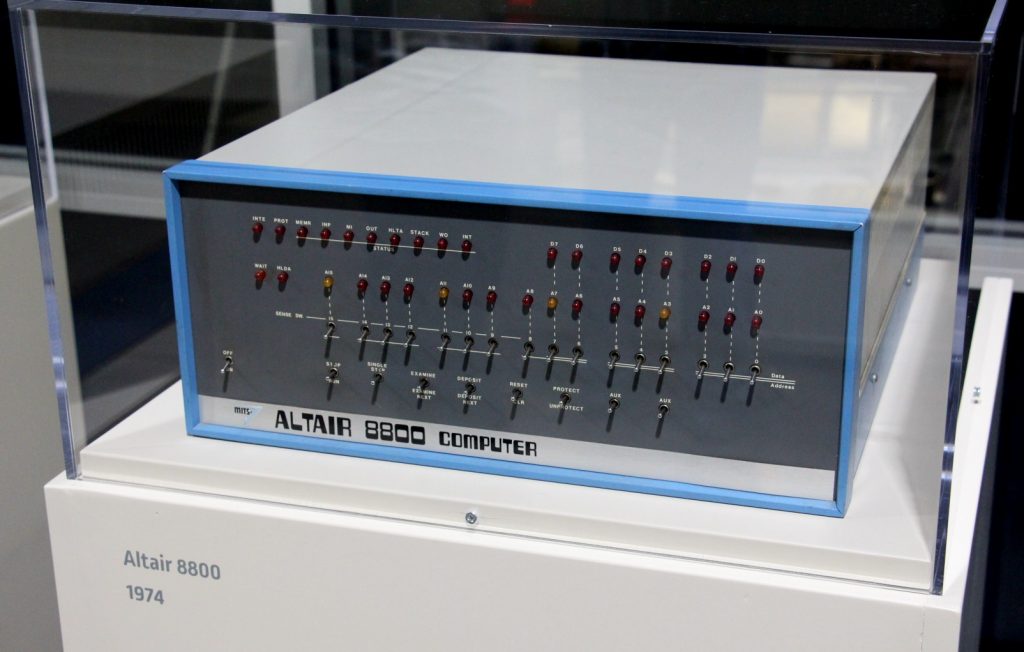
(Photo: The Apollo Education Experience Project)
The success of the Altair brought other manufacturers into the market. The most successful of these 8080-based systems was the IMSAI 8080. Although few people outside of vintage computing circles know the details about this machine, many people recognize it as the computer at the heart of the hackers’ system in the movie “Wargames.”
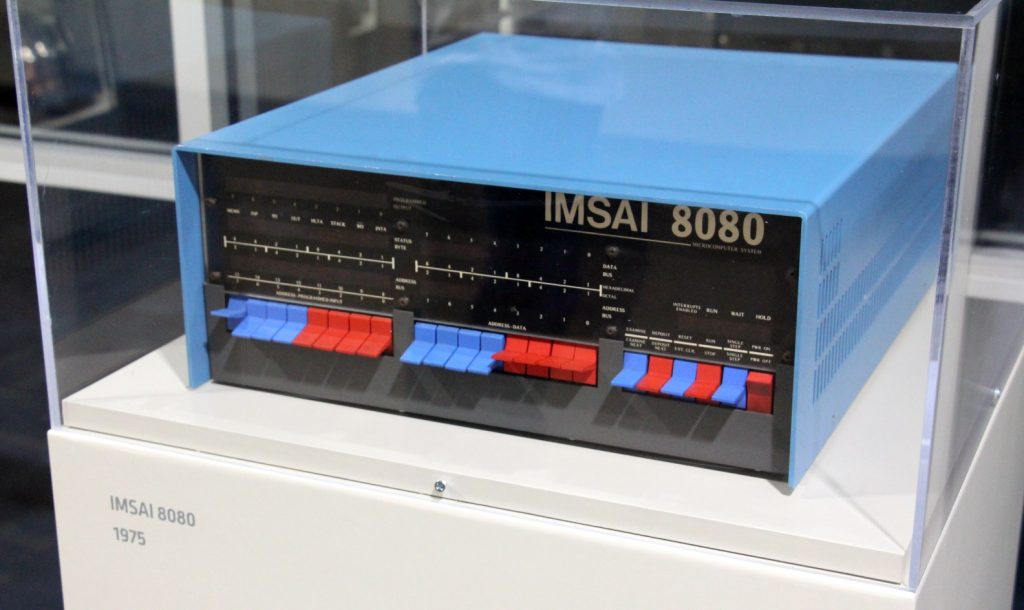
(Photo: The Apollo Education Experience Project)
The Museum has quite a number of other early microcomputers, such as a Kim-1 (the first single-board computer), and a rare Apple-1 motherboard.

(Photo: Thomas Walker)
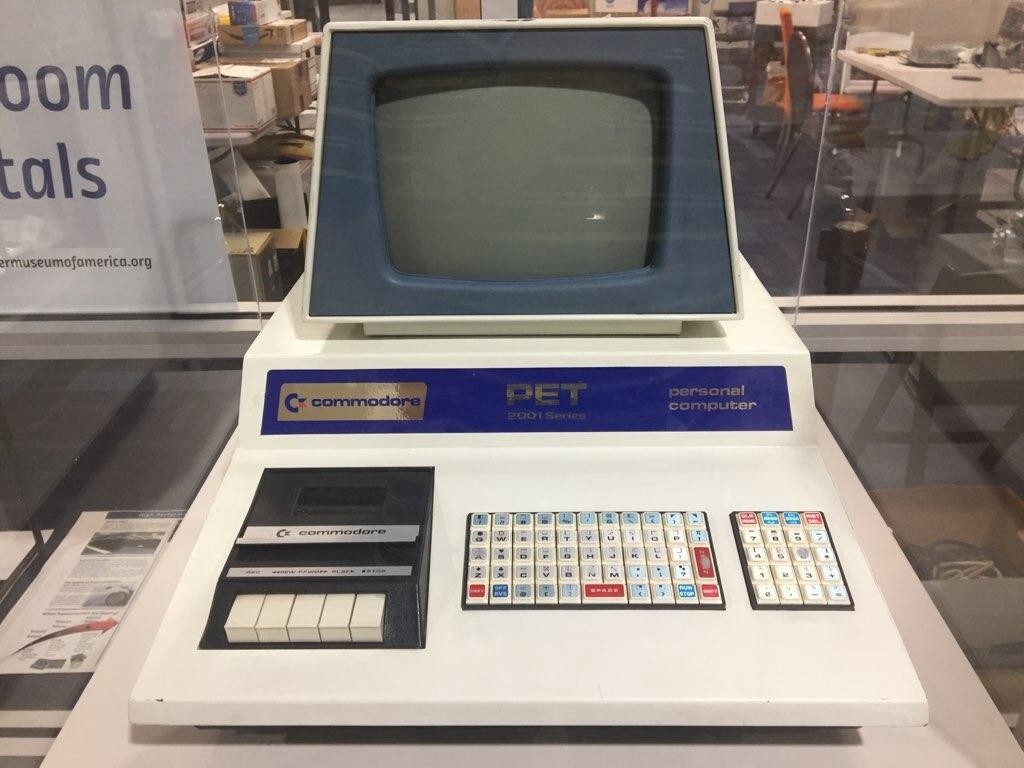
(Photo: Thomas Walker)
At this point, the computers will be more recognizable to most people. There are still some unique surprises, including an original Lisa-1 computer, still with 5.25″ floppy disc drives before the switch to the smaller 3.5″ floppy discs made more famous with the Macintosh.
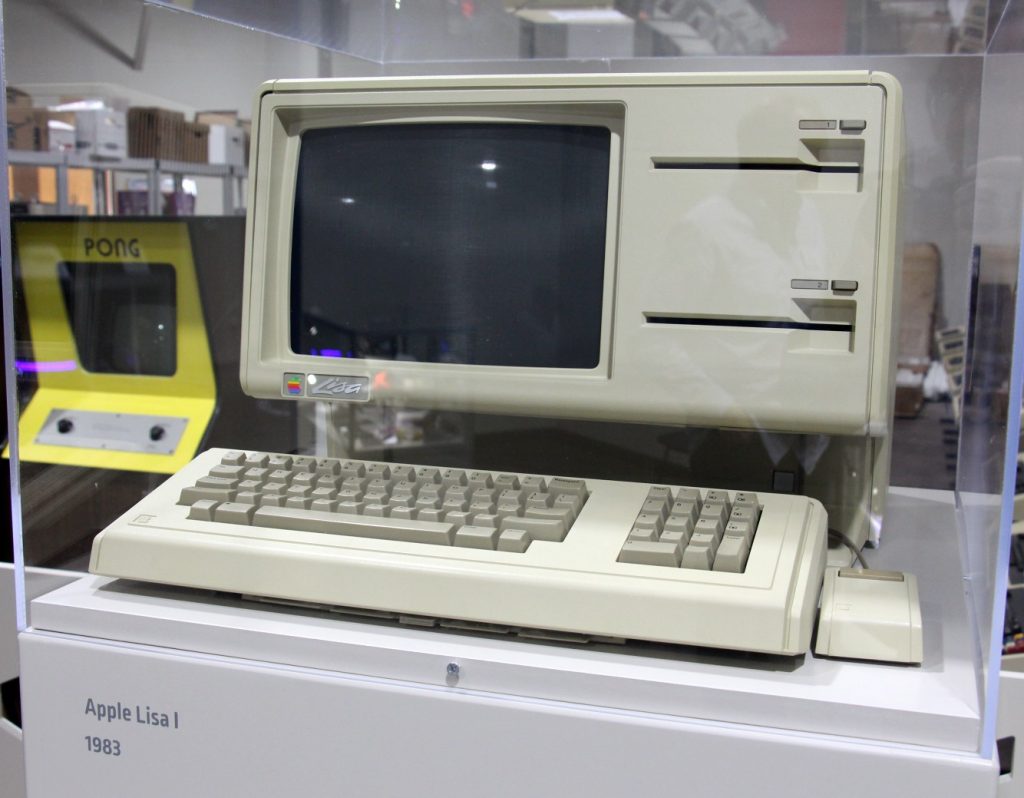
(Photo: The Apollo Education Experience Project)
Steve Jobs tried to spin a new company off from Apple to produce a more advanced computer, the NeXT computer. While the computer was extremely advanced for its time, it wasn’t successful on its own. However, it did have some very important cousins, one of which has a name that is almost a household name today, but not for computers.

(Photo: The Apollo Education Experience Project)
A film production company, Lucasfilm, recognized the importance of the computer revolution as applied to graphics. They started developing computer hardware and software specifically for producing graphics for use in film, but which could also have other commercial applications. The result of their efforts was the Pixar Imaging Computer. Super-advanced for its time, it was also horribly expensive, and even though much less-expensive versions were produced, it was never successful and the hardware division was sold off. But the name stayed with the graphics division, which went on to produce a number of very popular computer-animated movies.
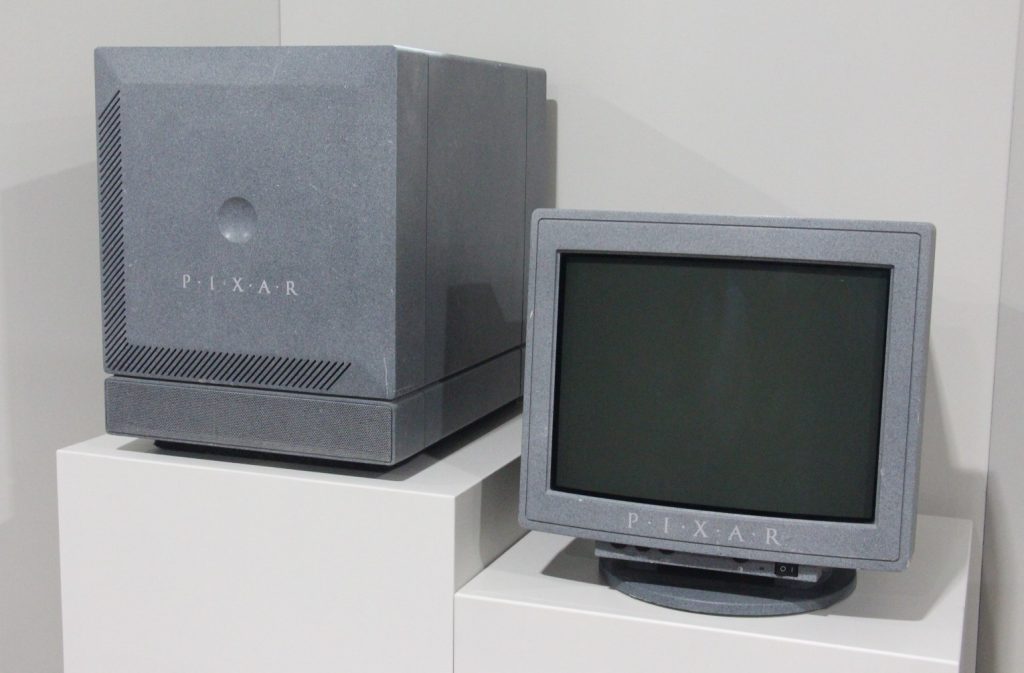
(Photo: The Apollo Education Experience Project)
There is much more to the Museum than just microcomputers. Sharp-eyed readers probably noticed something lurking behind the Lisa in the photo above. Yes, that is the very first coin-operated video arcade game!
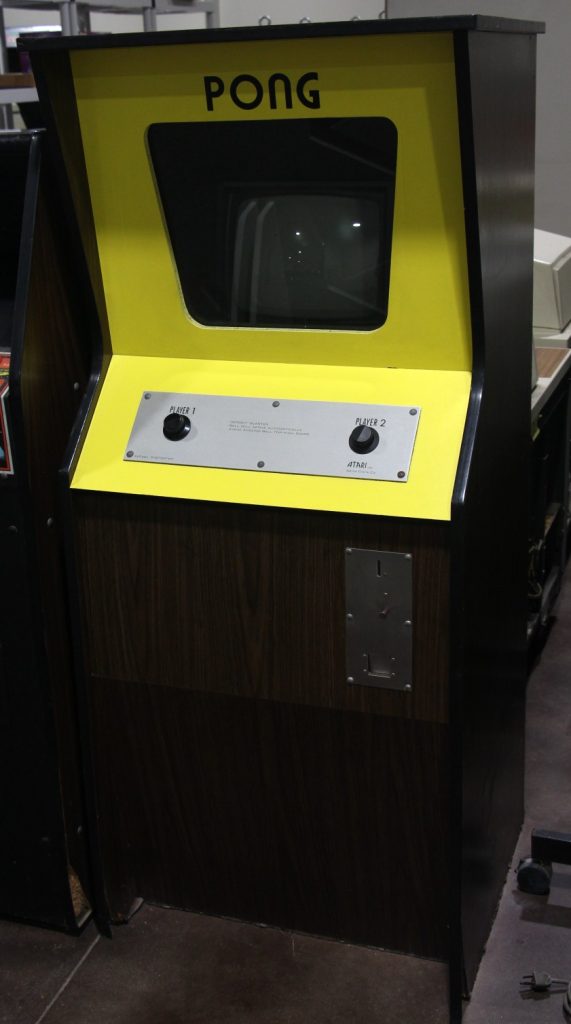
(Photo: The Apollo Education Experience Project)
You’ll find a number of early video game systems at the museum, both arcade and home. There is one that nearly brought tears to my eyes because my family had one in the mid-1970s while I was growing up. Many people are familiar with the Atari 2600 with its game cartridges and player controllers, but few know about the first home game system that used cartridges and controllers – the Magnavox Odyssey.
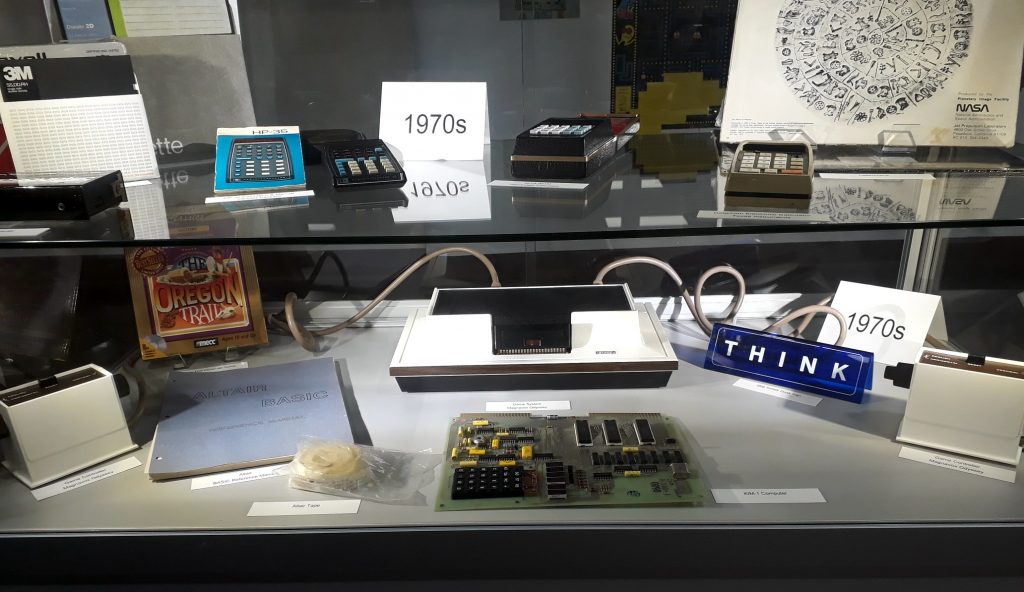
Also in this photo are a Kim-1 single-board computer (bottom front), a copy of Micro-Soft Altair BASIC on paper tape (bottom left center), 8″ and 5.25″ floppy discs (top left), an early Hewlett-Packard calculator (top left center), a MITS calculator with case (top center), and an early Texas Instruments calculator (top right)
(Photo: The Apollo Education Experience Project)
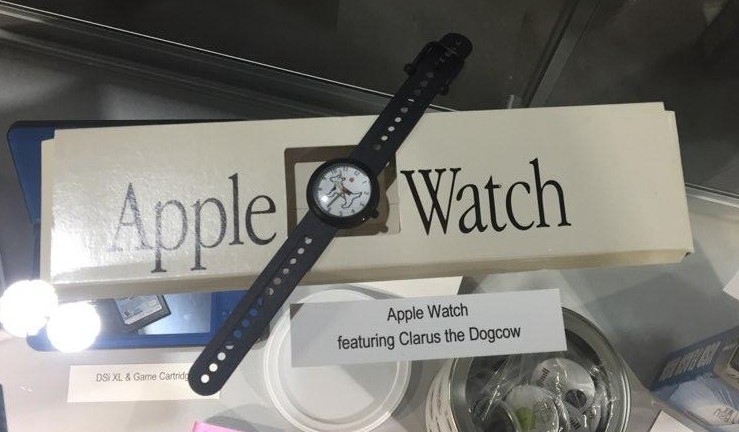
(Photo: Thomas Walker)
Bringing things back to the purpose for this site, the Museum has a great display dedicated to the Apollo lunar landings. At the center of this exhibit is a super-detailed and accurate scale replica of the Apollo 11 Lunar Excursion Module (or LEM) “Eagle.” As gorgeous as it is, I thought perhaps it was on loan from the Smithsonian or someplace, but Lonnie said it was commissioned specifically for the Museum.
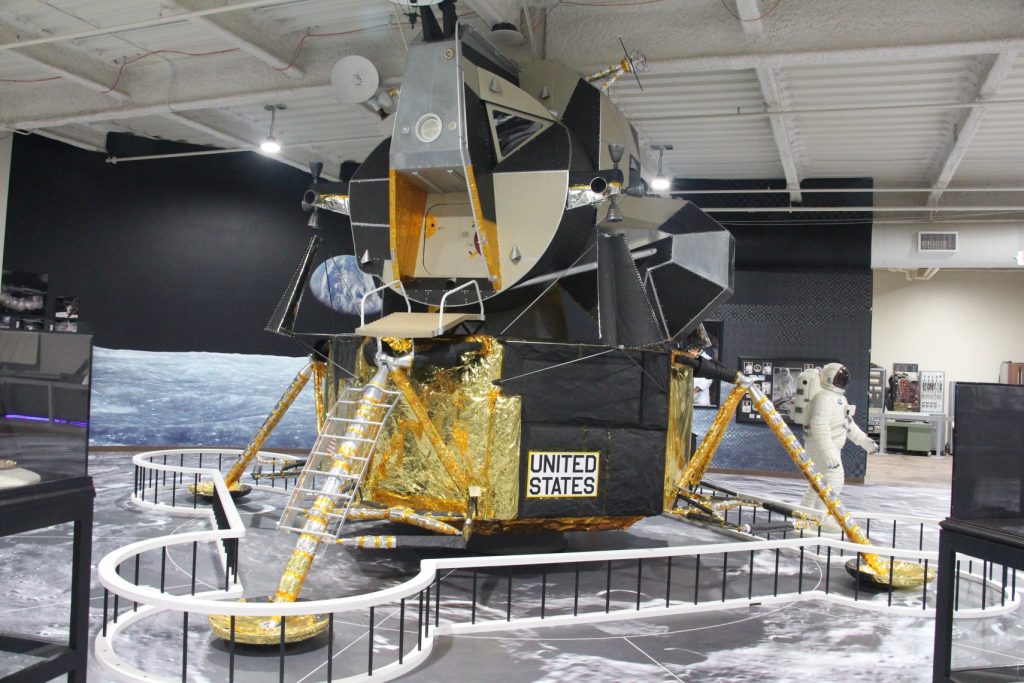
(Photo: The Apollo Education Experience Project)
There are several exhibits around the LEM, some with authentic artifacts, some replicas, and some educational displays. One such display is a graphic depiction of the “space race” between the United States and the Soviet Union. It includes a series of photos of significant milestones in space exploration from both sides, backed by a pair of lines showing the relative positions in the race – if the red line is higher, the Soviet Union was leading, if the blue line is higher, the US was leading. Of course, the blue line stays higher as it gets closer to the lunar landing!

(Photo: The Apollo Education Experience Project)
There was one piece that struck me with awe. A lot of autograph hunters try to get signatures of one or more of the Apollo astronauts. But I found something that would make them faint. Behind the LEM, on the wall with a huge print of the famous Apollo 8 “Earthrise” photo, was a collage with photos, mission patches, and autographs of EVERY astronaut that has ever walked on the moon, all in one frame!
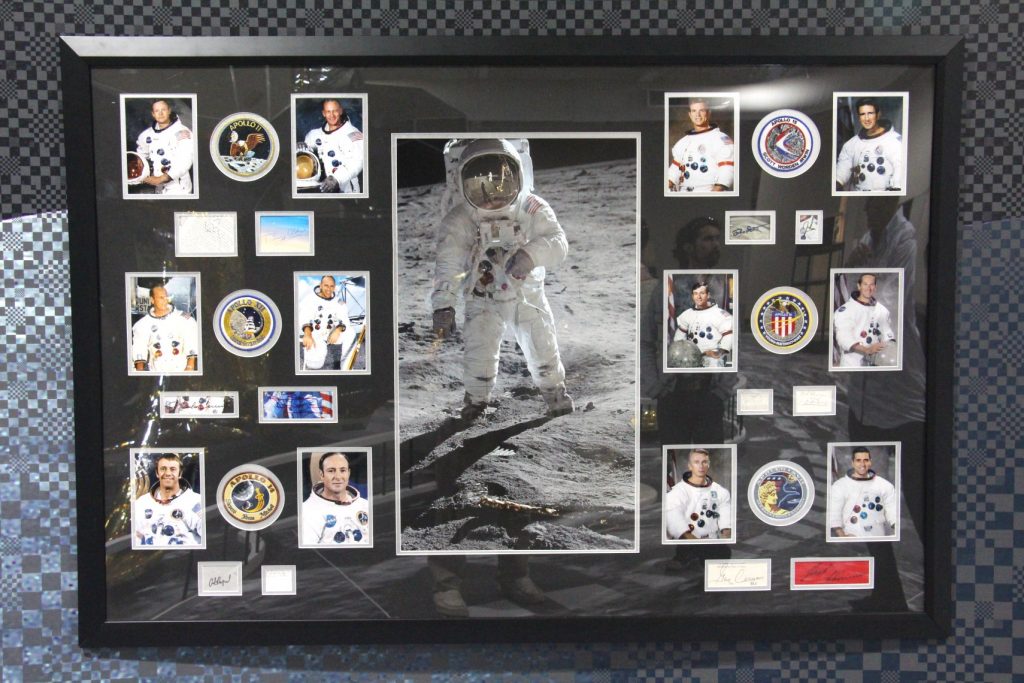
I could go on and on, but then I would spoil it for you! Even if you’re just marginally into computer history, you’ll find the Museum fascinating. You can even make it a family event. If you have younger kids, they offer a variety of educational and/or fun activites, including snap circuits (easy and fun introduction to electronics), vintage video games (such as a retro Atari 2600), and if you’re there at the right time, a chance to interact with a robot dog! My daughter really enjoyed the Museum’s Sony Aibo ERS-1000, and even managed to teach it some tricks the owners had not yet been able to!

(Photo: The Apollo Education Experience Project)



